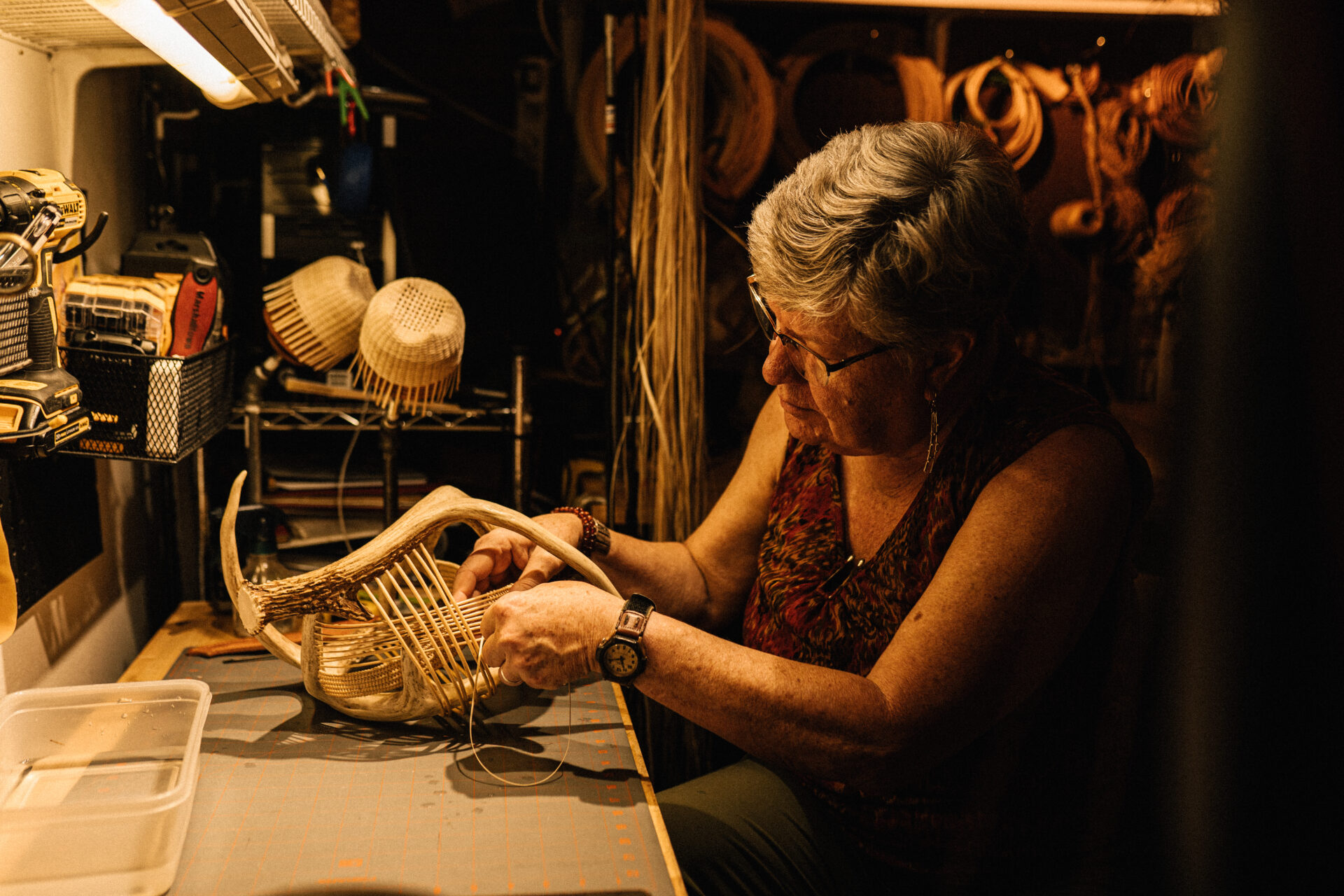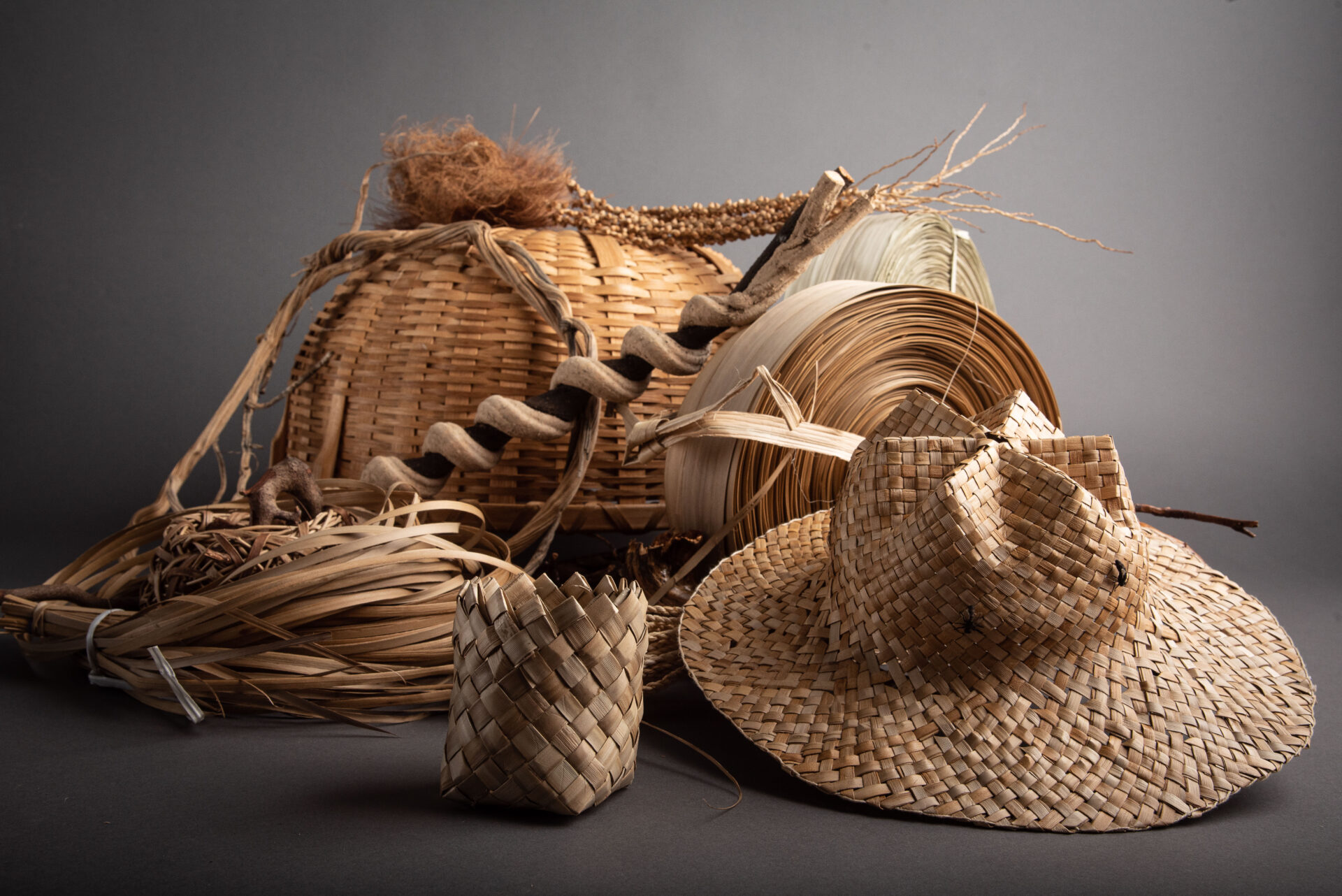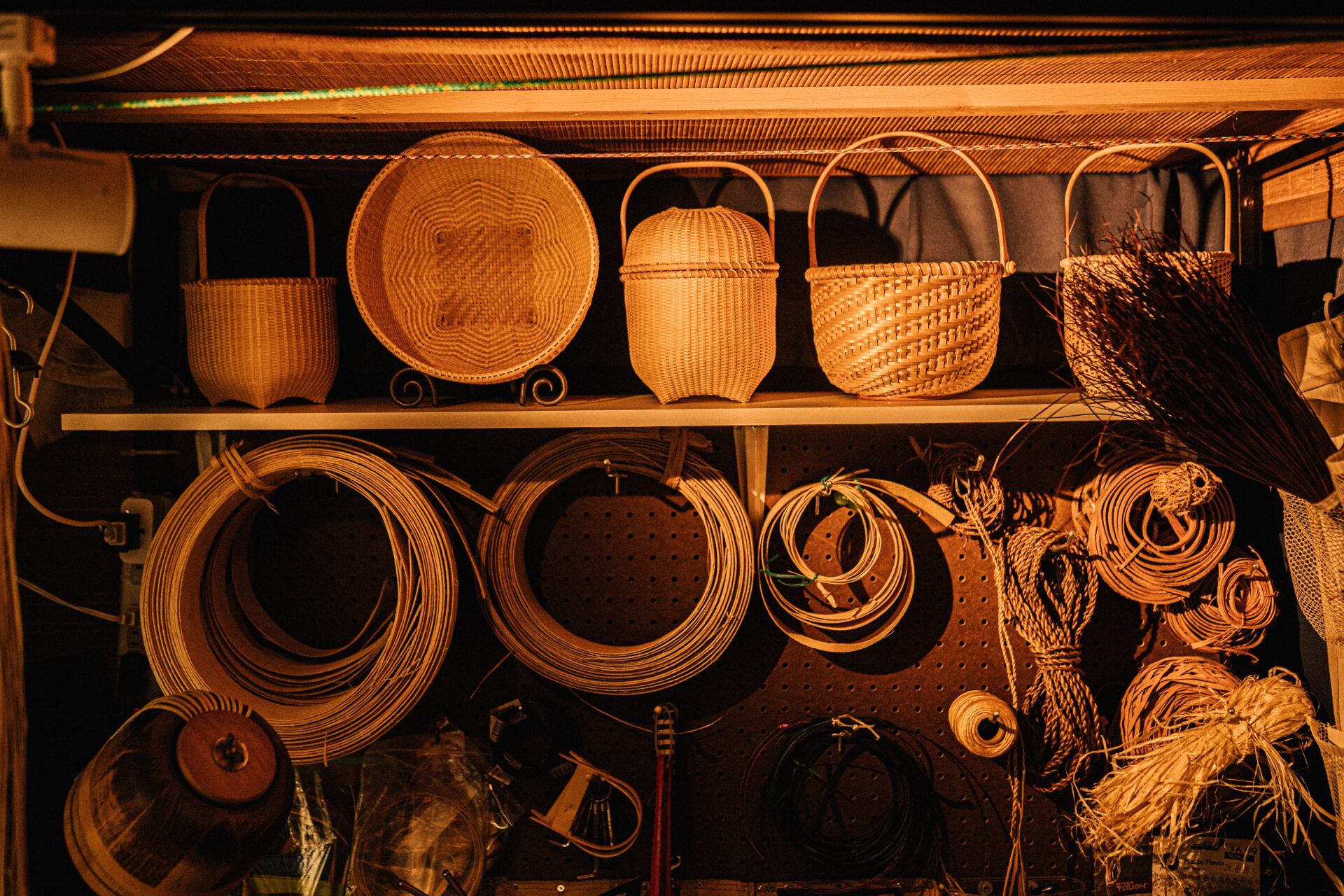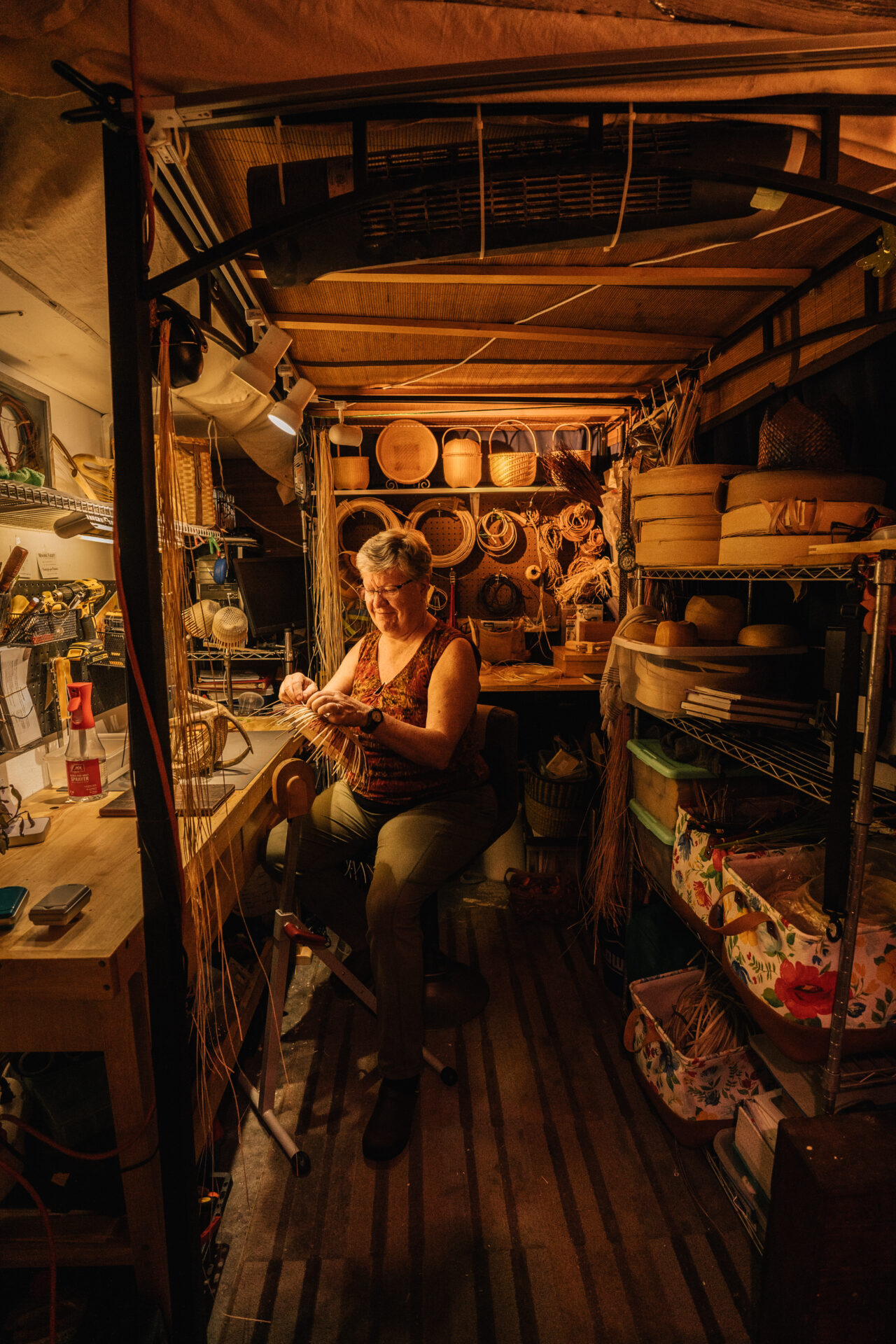
Weaving Her Way: How a Love for Nature Transformed into an Award Winning Career in Art
By Jenna MacFarlane
Photography by Jordan Randall, Jonathan Wayne Andress and David Dickey Jr.
or artists, inspiration is everywhere. Marcia Morse Mullins, acclaimed fiber artist and basket maker, found it for the first time in her own backyard.
Growing up a Girl Scout, you could almost always find Marcia somewhere in nature—camping, hiking, or exploring—in the midst of ineffable Michigan summers. Curious about the world and naturally observant, she developed an affection for botany, identifying plants in her backyard and beyond.
After earning a bachelor’s degree in plant biology, Marcia began making baskets—not for fun, but out of necessity. A young parent with more Christmas gifts to give than she could afford, Marcia decided to get a little creative with what went under the tree. She picked up a book about basket weaving and gave it a shot.
Like any art form, there’s a push and pull between practice and flow. After learning how to make a simple basket, Marcia increased her works’ complexity with practice. As she began selling her work, she learned to weave baskets quickly to keep up with all her sales. As she became more committed to her craft, she began attending art festivals and teaching weaving classes to beginners.
One day, while attending an outdoor art show, Marcia heard rhythmic drumming nearby. Following the sound, she found a Native American man pounding on a tree trunk with a sledgehammer. He recognized her watching—and offered to show her how to select, cut, and prepare a tree for splint woven basketry.
This man, Mike Sagataw, was a Potawatomi elder with a deep reverence for honoring the knowledge and traditions of his ancestors. He inspired Marcia to honor each felled tree with every basket she weaved, and instilled within her many pieces of wisdom she would carry on throughout her career.

Marcia left the art festival with a renewed sense of purpose and intention. She traveled to West Virginia for intensive training to hone her basketry skills. The more she wove, the more her work transformed into art. She began prioritizing form over function. Abandoning rigid rattan, she embraced flexible black ash, oak, and longleaf pine to weave pieces far beyond traditional utilitarian baskets. Luckily for her, Marcia and her husband, Tracy, moved to Lakeland in 2003, and longleaf pine are native to Central Florida.
What was once Marcia’s hobby on the side—a remedy for a strapped holiday season—had become her life’s purpose in just a few years.
Marcia’s work was first installed in an art gallery in 1996. Since then, her art has been featured in national exhibitions, invitational fine art shows, publications, park and museum installations, and more. Today, Marcia has more than 40 years of experience and so much muscle memory she could weave in her sleep.
When she starts a new project, she doesn’t always have a finished product in mind—she just starts weaving. Marcia never works from a fixed sketch or a blueprint. Creating is instinctual: if she’s having a lot of trouble weaving something, it usually means she has to step back and make something different. As Sagataw taught her, “The tree will tell you what it wants to be.” With that in mind, Marcia begins every project by playing with material, doing and undoing, until something substantive takes shape.
That’s how her recent body of work came to be. Interplay is all about movement and playfulness, featuring white oak woven with black ash splint on whitetail deer antlers. A piece from this series will be featured this fall in Marcia’s biggest exhibit yet in Venice, Italy.


“Venice has its masterpieces and Venetians know craftsmanship. An artisan’s work is only complete when it has been seen, and time will tell whether my work will hold it’s own in Venice.”
A few months ago, the Michelangelo Foundation for Creativity and Craftsmanship reached out to Marcia to feature her work at Homo Faber 2024: The Journey of Life. Held every other year in Venice, Homo Faber stages immersive exhibitions showcasing hundreds of handcrafted objects made by craftspeople from all over the world. Out of the 400 artists selected for the event, only 57 are from the United States—and Marcia is one of them.
The fact that the curators at Homo Faber scouted Marcia’s work for this event is fitting. This year’s exhibition theme, The Journey of Life, encompasses everything Marcia’s art represents. Her understanding of botany—deeply studying the tree when it’s alive—helps her honor it in death, weaving its remains into something beautiful, moving, and meaningful.
Sagataw taught Marcia the importance of sharing wisdom. She does this today by teaching online botany courses through Fibre Arts Take Two, putting her Girl Scout skills to work helping international students forage materials from their own backyards. And as the president of the Bartow Art Guild, she leads weekly local basketry workshops for all skill levels, curates exhibits and more.
Marcia teaches every student to be flexible with their creations.
“You have to be open—you can’t judge yourself or your work,” she says, emphasizing the artistic process is a winding one. “Just enjoy the journey.”
Marcia and Tracy will be traveling to Venice in September to see her artwork in person at Homo Faber. It’s the highlight of her artistic and professional career, and friends and fans can support this endeavor by searching for a GoFundMe fundraiser she set up.
She is humbled and in awe of this opportunity.
“Venice has its masterpieces and Venetians know craftsmanship. An artisan’s work is only complete when it has been seen, and time will tell whether my work will hold it’s own in Venice,” she says.
When it comes to art and creativity, we all start at the same place. Marcia urges anyone who’s curious about art to go for it. Grab a book at the library, take a class, try your hand at new hobbies: you never know where it could take you.


